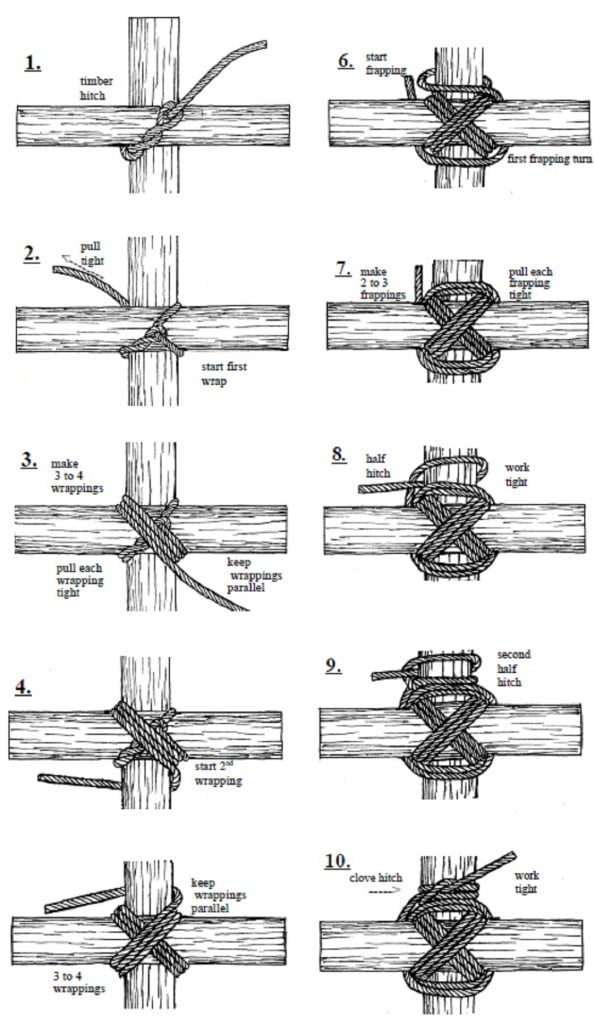Lashing is the art of tying two or more items together, securely, to make almost anything from practically nothing. The secret to lashing is in the wrapping. Every turn adds pressure, which will result in a very strong structure with little give. In the wilderness, lashings are invaluable when making a shelter, raft, tripod for your hammock chair, or any other structure subject only to your imagination.
There are two basic principles to lashing: wrapping and frapping. Wrap around two or more poles then frap (wrap) between the poles and over the first wraps. Wrapping brings the poles together, and frapping tightens the wrap. A tight lash is the key to a successful lashing.
Square Lashing
Square Lashing is used to bind two poles that are in contact and cross each other at any angle between 45′ and 90′
Round Lashing
Round lashing is used to bind two parallel poles along side each other or to extend the length of a pole. Lashing can be tightened by driving a small wooden wedge between the poles.

Diagonal Lashing
Diagonal Lashing is used to bind two poles that are in contact and cross each other at a variety of angles. Two poles joined with a diagonal lash may be used to help brace a rectangular frame.
Note – If the angle between the two poles is less than 45′, use a shear lashing to bind the two poles.
Shear Lashing
Shear lashing is used to bind the ends of two poles together at an angle. It is also good for reinforcing a broken or weak pole. Used to make an A-Frame, or shear legs designed to support weight. Multiple Shear legs can be combined to support an aerial walkway.


Tripod Lashing
Tripod Lashing is similar to Shear Lashing, except that it binds the end of three poles together at an angle. Used in the construction of a tripod.
Note – for most tripod lashings, lay the poles side by side with the butt ends aligned. Lash at the top ends, which may be of varying lengths.


Lashing Applications
So what do you do now that you can lash a few poles together? You get creative. You can combine different types of lashing to make any number of objects: elevated platform, flag pole, camp chair, wash basin, drying rack, cooking tripod, lean-to or tee-pee shelter, or whatever else you can think of. Combine additional rope work using ladders, nets, and hammocks (discussed in other section) and the sky is the limit what you can make with some rope and wood.
Looking for a way to lighten your backpack? Build your camp when you get there and leave the expensive gear at home.







